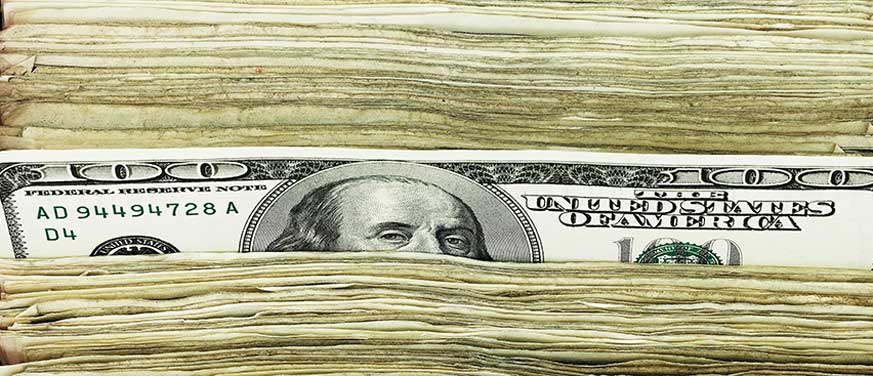Speed read
- Markets have started to discount stagflation as a less distant tail risk
- Turn in sentiment is negative for credits as inflation eats into returns
- Stagflation unlikely to be the endgame, fears should blow over in 2022
Stagflation occurs when declining economic growth and its resultant high unemployment coincides with rising prices, combining the words ‘stagnation’ and ‘inflation’. Surging natural gas prices, a massive shortage of lorry drivers in Europe that have brought some supply chains to a halt, and increased warnings of ‘cost pressures’ by companies have brought back stagflation fears as a driver for market sentiment for the first time since the 1970s.
Stagflation is particularly negative for corporate bonds, since inflation eats into their returns while a worsening economy increases the likelihood that their issuers will default. However, such fears may be overblown, and the true economic outlook coming out of the pandemic may surprise to the upside, which would benefit equities, the team says.
“With markets upgrading the probability of a stagflationary outcome for the global economy, we believe now is the right time to reduce risk until the stagflationary fears blow over,” says Peter van der Welle, Strategist with the Global Macro team.
Fears may be overdone
“The stagflation narrative that is on the rise in market discussions at the moment will only fade if global growth again surprises to the upside, or if evidence emerges that supply chain pressures ease, or that corporates are taking rising input costs in their stride and will still manage to report higher margins in the next few quarters.”
“Looking ahead at the macro landscape in the next 6-12 months, we think these stagflationary fears are overdone, and a more upbeat macro sentiment could re-emerge. A resilient consumer who is enjoying wage growth, elevated house prices and financial wealth, and excess savings will support the global economy in 2022.”
“US excess household savings now amount to USD 3.3 trillion. Next to that, higher corporate capital expenditure and restocking will contribute to economic activity growth beyond the fourth quarter of 2021.”
Central banks’ dilemma
One issue is that stagflation presents central banks with a dilemma, since they can’t act to combat the higher inflation – such as by sucking cash out of the economy – without also harming a nascent economic recovery and raising unemployment further. Credit values have partially relied on central banks pumping money into the economy for many years, buying bonds in QE programs.
“The pace and magnitude of compression in the credit markets on the back of massive excessive liquidity provision by central banks has been phenomenal,” says Van der Welle. “For instance, high yield spreads (the difference between yields of credits and AAA government bonds) have declined from 900 basis points to 298 in the last 18 months.”
“This leaves us with highly valued credit markets sitting in an early expansion phase of the business cycle in an apparent disconnect with the financial cycle. High yield and investment grade bonds are exhibiting the kind of behavior we would normally expect late in the business cycle when in fact we are in the early mid-cycle instead.”
Macro sentiment may turn
This does though bode well for equities once things start to improve. “With markets typically leading the cycle by nine months, a turnaround in macro sentiment could be around the corner, so investors need to be swift on their feet,” Van der Welle says. “Once supply pressures ease, macro surprises start to improve and corporate profitability holds up, we expect equities to continue to outperform high yield.”
“From a relative point of view, US equities are less expensive compared to US high yield bonds, taking the low interest rate environment into account. A sizeable gap has opened up between the US implied equity risk premium and the US high yield spreads, which makes equities relatively more attractive.”
“Furthermore, a spread below 500 bps – the current global high yield spread is 360 bps – has historically seen the outperformance of equities compared to high yield in the subsequent six months.”
The gap between the US forward equity risk premium and high yield spreads has widened.
Source: Refinitiv Datastrea, Robeco
Withdrawing excess liquidity
Another issue is that developed market central banks are increasingly recognizing the need to start withdrawing excess liquidity, reducing the bond purchases that have propped up the prices of credits. The ECB is likely to wind down its Pandemic Emergency Purchase Program (PEPP) in 2022, while the Fed’s famous ‘dot plot’ hints at a rate hike in 2022.
“In an environment of declining excess liquidity, and with the Fed potentially struggling to decouple tapering from tightening in its communication to the markets, the downside risk from duration risk in credit is increasing while the upside risk from further spread compression is diminishing,” says Van der Welle.
“Equities are better positioned to leverage above-trend US GDP growth should this occur. If US GDP growth stays above trend in 2022 and 2023, equities would typically outperform high yield. The Fed is forecasting GDP growth of 3.8% in 2022, which is more cautious than the consensus estmate of 4.2%”.
“This would correspond with a US manufacturing ISM index reading of 55, where any figure above 50 implies economic expansion. If though the much-watched ISM reading were to drop below 55, then the equity upside versus high yield would start to dwindle.”
Awaiting a clearer view
“This would correspond with a US manufacturing ISM index reading of 55, where any figure above 50 implies economic expansion. If though the much-watched ISM reading were to drop below 55, then the equity upside versus high yield would start to dwindle.
“In all, we prefer to tactically scale down portfolio risk to weather stagflationary turbulence for as long as it lasts,” he says. “But we do see potential in an overweight equities versus high yield trade once markets get a clearer view on the favorable macro outlook for 2022.”
Read the Full Monthly Outlook Here



